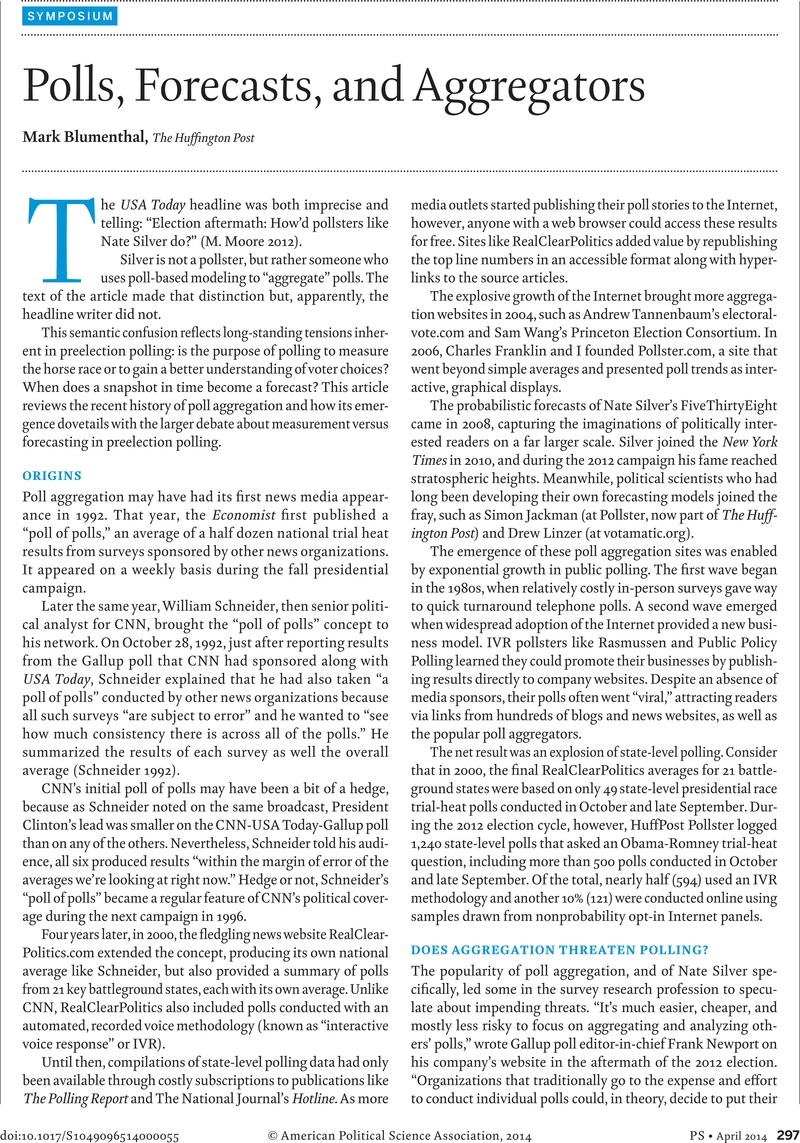Crossref Citations
This article has been cited by the following publications. This list is generated based on data provided by Crossref.
You, Quanzeng
Cao, Liangliang
Cong, Yang
Zhang, Xianchao
and
Luo, Jiebo
2015.
A Multifaceted Approach to Social Multimedia-Based Prediction of Elections.
IEEE Transactions on Multimedia,
Vol. 17,
Issue. 12,
p.
2271.
Pasek, Josh
2015.
Beyond Probability Sampling: Population Inference in a World without Benchmarks.
SSRN Electronic Journal,
Lewis-Beck, Michael S.
and
Dassonneville, Ruth
2015.
Forecasting elections in Europe: Synthetic models.
Research & Politics,
Vol. 2,
Issue. 1,
Graefe, Andreas
2015.
Combined Forecasts of the 2013 German Election: The PollyVote.
SSRN Electronic Journal,
Graefe, Andreas
Green, Kesten C.
and
Armstrong, J. Scott
2015.
Do Econometric Models Provide More Accurate Forecasts When They are More Conservative? A Test of Political Economy Models for Forecasting Elections.
SSRN Electronic Journal ,
Tien, Charles
and
Lewis-Beck, Michael S.
2018.
Congressional Midterm Forecasts: A Trump Economic Difference?.
The Forum,
Vol. 16,
Issue. 4,
p.
477.
Larsen, Erik Gahner
and
Fazekas, Zoltán
2021.
Reporting Public Opinion.
p.
109.
Rai, Praveen
2021.
Psephological Advancements and Pitfalls of Political Opinion Polls in India.
Open Political Science,
Vol. 4,
Issue. 1,
p.
258.
De Stefano, Domenico
Pauli, Francesco
and
Torelli, Nicola
2022.
Preelectoral polls variability: A hierarchical Bayesian model to assess the role of house effects with application to Italian elections.
The Annals of Applied Statistics,
Vol. 16,
Issue. 1,
Easaw, Joshy
Fang, Yongmei
and
Heravi, Saeed
2023.
Using polls to forecast popular vote share for US presidential elections 2016 and 2020: An optimal forecast combination based on ensemble empirical model.
Journal of the Operational Research Society,
Vol. 74,
Issue. 3,
p.
905.



